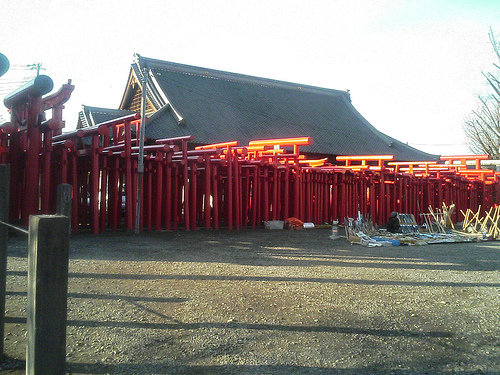The music scene in Japan is rich and varied, with its own unique ebbs and flows of visual rock, hip hop, R&B, indies and even enka, the traditional music that fills the same role for the Japanese as country music does in the U.S. The flagship of Japan’s music scene is JPOP, and just as anime and manga have found a place in the hearts of fans all over the world, there is no aspect of Japan’s pop world that isn’t followed by aficionados in other countries. It’s interesting to live in Japan and watch the march of progress in the pop scene here, the rise and inevitable fall of influential producers like Tetsuya Komuro (whose “Komuro Family” ruled the 1990s), Morning Musume creator Tsunk, and boy-band kingmaker Johnny Kitagawa of Johnny’s Entertainment Group. Every year there are various music-related fashion trends, like when Amuro Namie created a generation of “Amullers” that imitated her slinky style, or the effect on fashion of the chic Kumi Kouda now. The past is often prelude, too: when we started J-List in 1996, there was no hotter JPOP team than Ami and Yumi of Puffy. Now, a decade later, they’ve made a name for themselves outside of Japan and even have their own cartoon series. Currently a bubblegum pop song by mock Pro Wrestler and comedian Koriki and his stylish backup singers is one of the most popular songs in Japan — see the music video right here.
Back when I was single, I did a fair bit of traveling around Japan, hitchhiking or riding trains on “Youth 18” tickets, which allow you to go anywhere in Japan for around $25 a day, as long as you don’t mind taking 14 hours to get from Osaka to Tokyo. (Poor gaijin like me who live in Japan don’t get to buy the spiffy Japan Rail tickets that tourists from overseas have access to.) I’ve been from Hokkaido to Hiroshima and have really enjoyed getting out and seeing the country. During my travels I’ve stayed at various places, including conventional “business” and less-conventional “love” hotels, western-style youth hostels, minshuku (a kind of Japanese bed & breakfast where everyone eats and sleeps in a big communal room), and “saunas” (a public bath with a sauna with a central room where you can sleep on the floor for free, trying to ignore the snores of everyone around you). But I’ve always been a fan of capsule hotels, the miniature honeycomb-like hotel rooms found in larger Japanese cities, a great way to sleep on the cheap. Inside your capsule you have everything you need: bed, blanket, pillow, a little TV, radio with alarm, and a curtain for privacy. Capsule hotels usually have large communal baths and saunas, too. They’re cheap, too: you can stay in the heart of Tokyo’s hip Shibuya district for around $40.
Valentine’s Day is not far off, in case you wanted to do something special and Japan-related this year. Rather than being a day for couples to go on a special date together, “Valentine Day” has become a day for women to show their devotion to men by giving them chocolate. For casual giving there are hundreds of prepackaged chocolate gift boxes sold in stores, and often female office workers will give small boxes of giri choco or “obligation chocolate” to male co-workers to be nice to them, knowing that they will get a return gift on March 14, designated as White Day. Girlfriends, wives and daughters will often make hand-made chocolates for their special men to show their love and thank them for working hard. If you’d like to give this a try this year, we’ve got a selection of chocolate molds that you can pour melted chocolate or cake mix into, and J-List sells dozens of amazing chocolate treats from Japan, from Japan-only Kit Kat varieties to Pocky and much more.
















